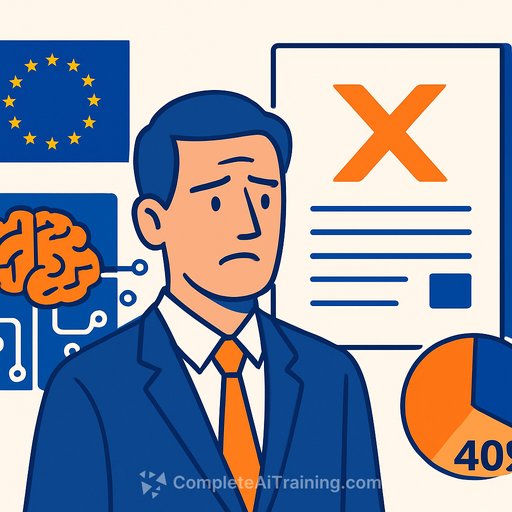EU research commissioner's 40% AI-patent claim appears tied to a retracted preprint
Ekaterina Zaharieva has made AI-for-science a priority in the EU's strategy, with nearly €100 million earmarked for 2026-27 under Horizon Europe. In a 25 September speech, she said that "in materials science, AI could drive patent filings up by almost 40%."
Multiple researchers say that figure likely traces back to a high-profile preprint later withdrawn for concerns over data and validity. The claim remains on the Commission's website at the time of publishing.
What was cited-and why it's a problem
The likely source is a December 2024 arXiv preprint, "Artificial Intelligence, Scientific Discovery, and Product Innovation." It reported that AI-assisted researchers discovered 44% more materials, leading to a 39% rise in patent filings and a 17% increase in downstream product innovation.
In May, MIT disowned the work after review, stating it had no confidence in the data's provenance, reliability, or validity. The author is no longer at MIT, and the preprint has been withdrawn from arXiv. A Commission spokesperson did not deny this study informed the commissioner's remark, pointing instead to a Nature feature that, notably, did not quantify patent effects.
What domain experts actually see
Materials scientists contacted could not identify any credible study quantifying a 40% patent boost from AI. Several said the evidence base is thin for patent outcomes tied directly to AI tooling in materials discovery.
They noted real progress in machine learning, automation, and image recognition over the past two decades, but cautioned against grand claims. Today's bottleneck is data: many key property measurements are sparse, noisy, or locked behind labor-intensive experiments. AI can speed parts of the workflow, but it does not replace expert judgment or the need to generate high-quality experimental data.
Practical guidance for labs and R&D leaders
- Verify sources before citing. Check if a paper has expressions of concern, withdrawals, or retractions. Use the Retraction Watch database for a quick scan: retractiondatabase.org.
- Demand data, code, and protocols. If claims hinge on proprietary data, treat results as unverified until an independent team replicates them.
- Benchmark against strong baselines. Compare AI-augmented workflows to well-tuned classical methods and experienced human practice, not strawman baselines.
- Track actionable metrics, not hype. Time-to-synthesis, yield, cost per candidate, hit rate, false discovery rate, and reproducibility matter more than headline patent counts.
- Run controlled pilots. Start with one or two high-value tasks (e.g., structure-property prediction, image-based defect detection) and measure lift over a fixed period.
- Invest in data generation. Better labels and standardized assays often beat fancier models. Close the loop between simulation, experiment, and curation.
- Keep a human in the loop. Use AI to prioritize, summarize, and filter; leave final calls to domain experts until error modes are well understood.
Policy and funding implications
- Require independent replication for any flagship claims tied to public funds.
- Set realistic KPIs: efficiency, quality, and reproducibility over speculation about patents.
- Fund open, well-documented benchmark datasets and challenge problems specific to materials science.
- Encourage transparent reporting: negative results, uncertainty, and known failure modes.
How to measure AI impact in materials R&D
- Define the task precisely (e.g., bandgap prediction within ±X eV, stability classification with target AUROC).
- Use time-bound, prospective evaluations instead of post-hoc cherry-picking.
- Record end-to-end cycle time from hypothesis to verified measurement, including failed attempts.
- Quantify economic value: cost per validated hit and cost to scale a candidate to TRL 4-6.
- Avoid extrapolating task-level gains to patents or products without longitudinal evidence.
Bottom line
AI is already useful in materials labs, especially for prioritization, simulation support, and automation. But sweeping claims about patent surges lack credible, peer-validated evidence.
For researchers: keep the focus on reproducible gains and measurable bottlenecks. For policymakers: anchor strategies to independent replications and transparent datasets, not headline figures tracing back to withdrawn work.
Further resources
- Quick checks on withdrawn literature: Retraction Watch Database
- Upskilling your team on practical AI courses by job function: Complete AI Training
Your membership also unlocks:






